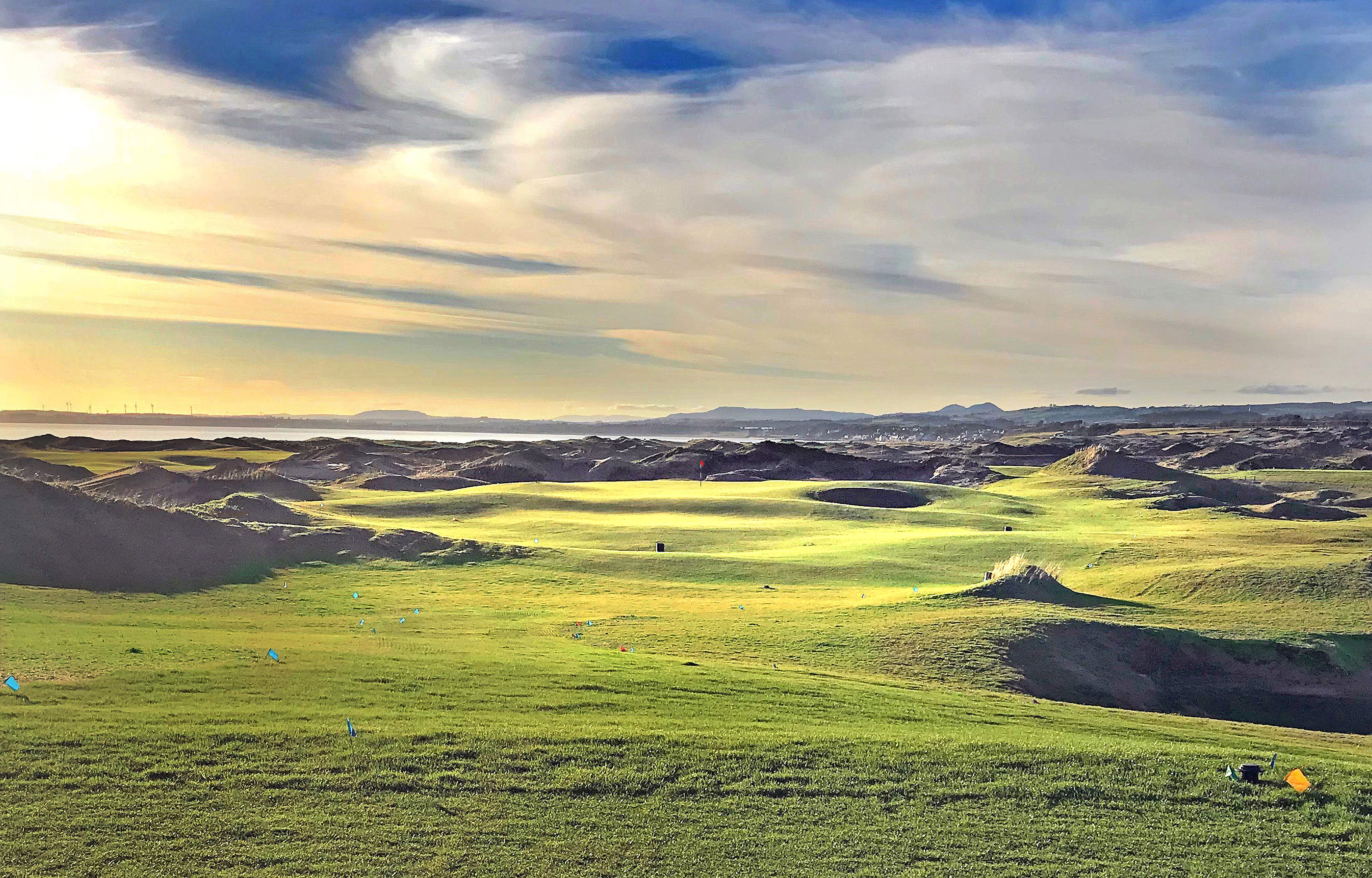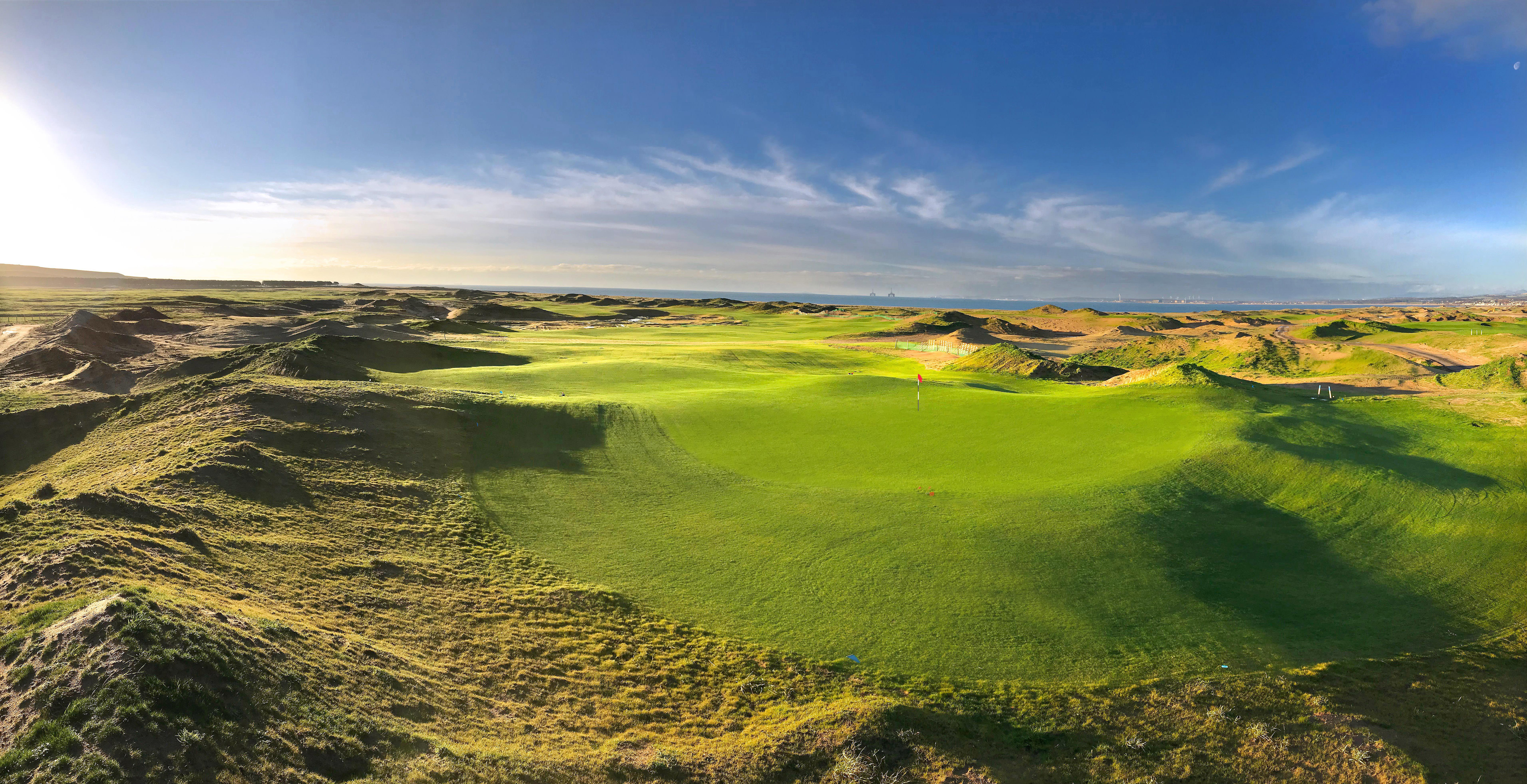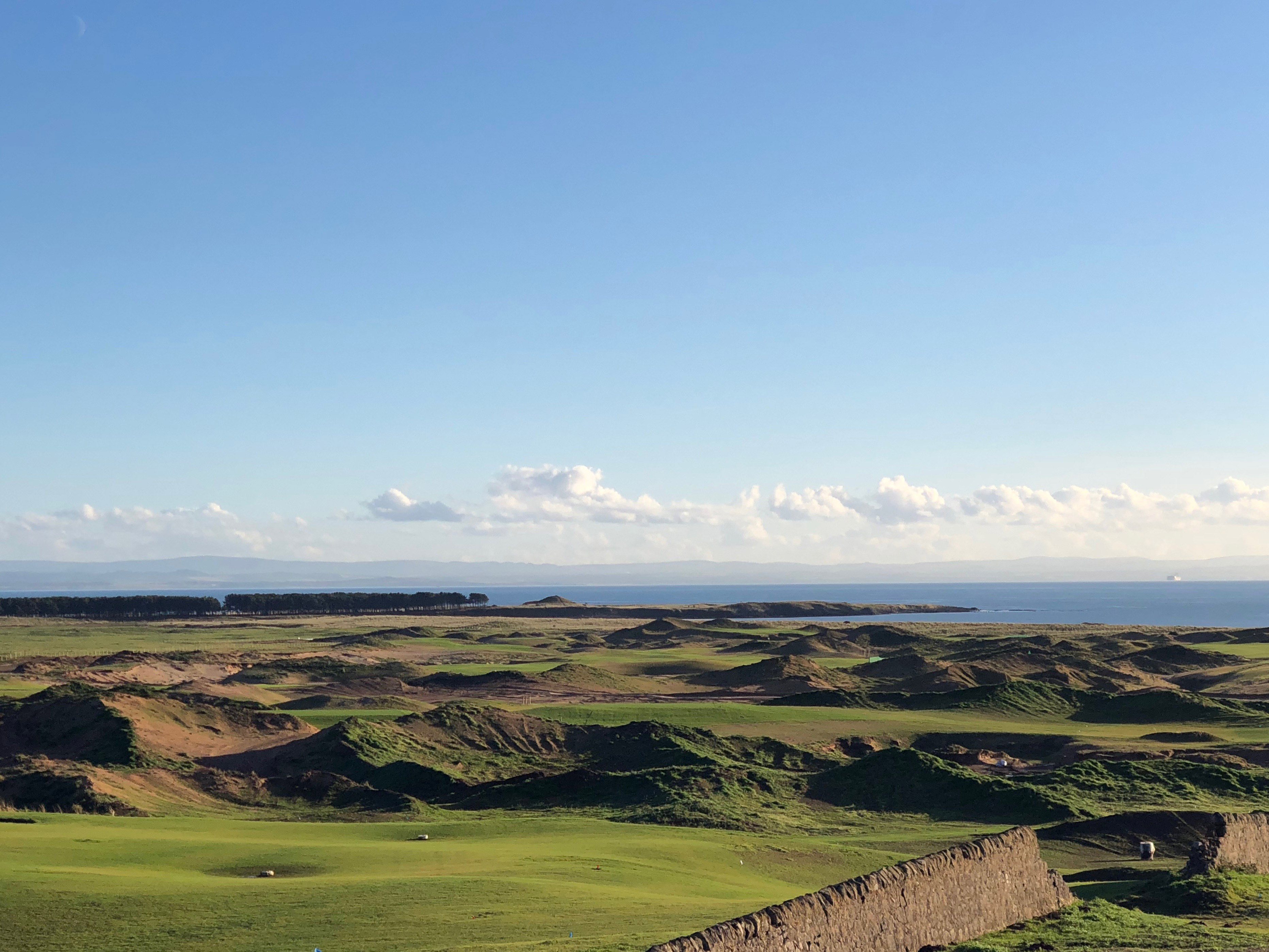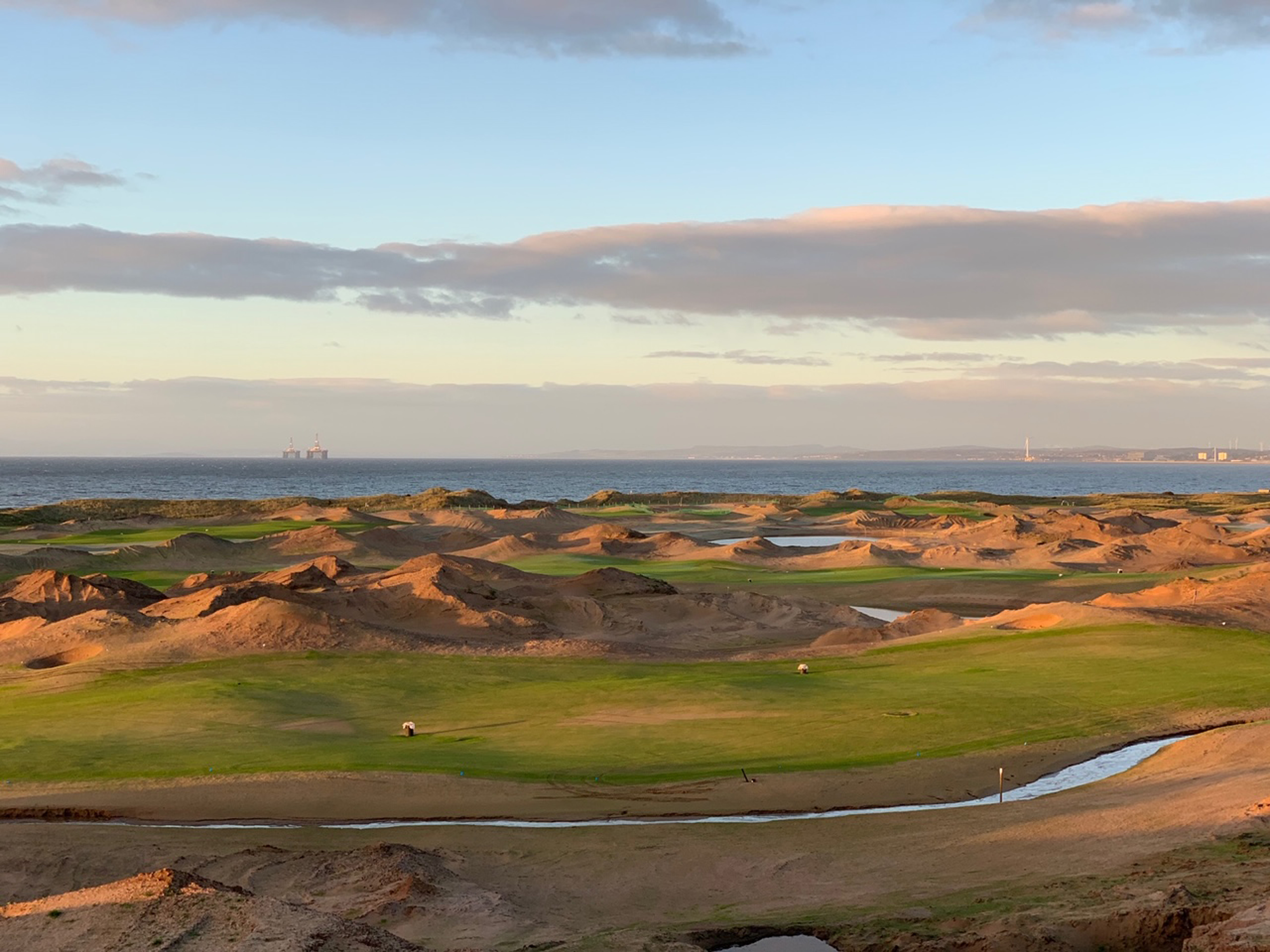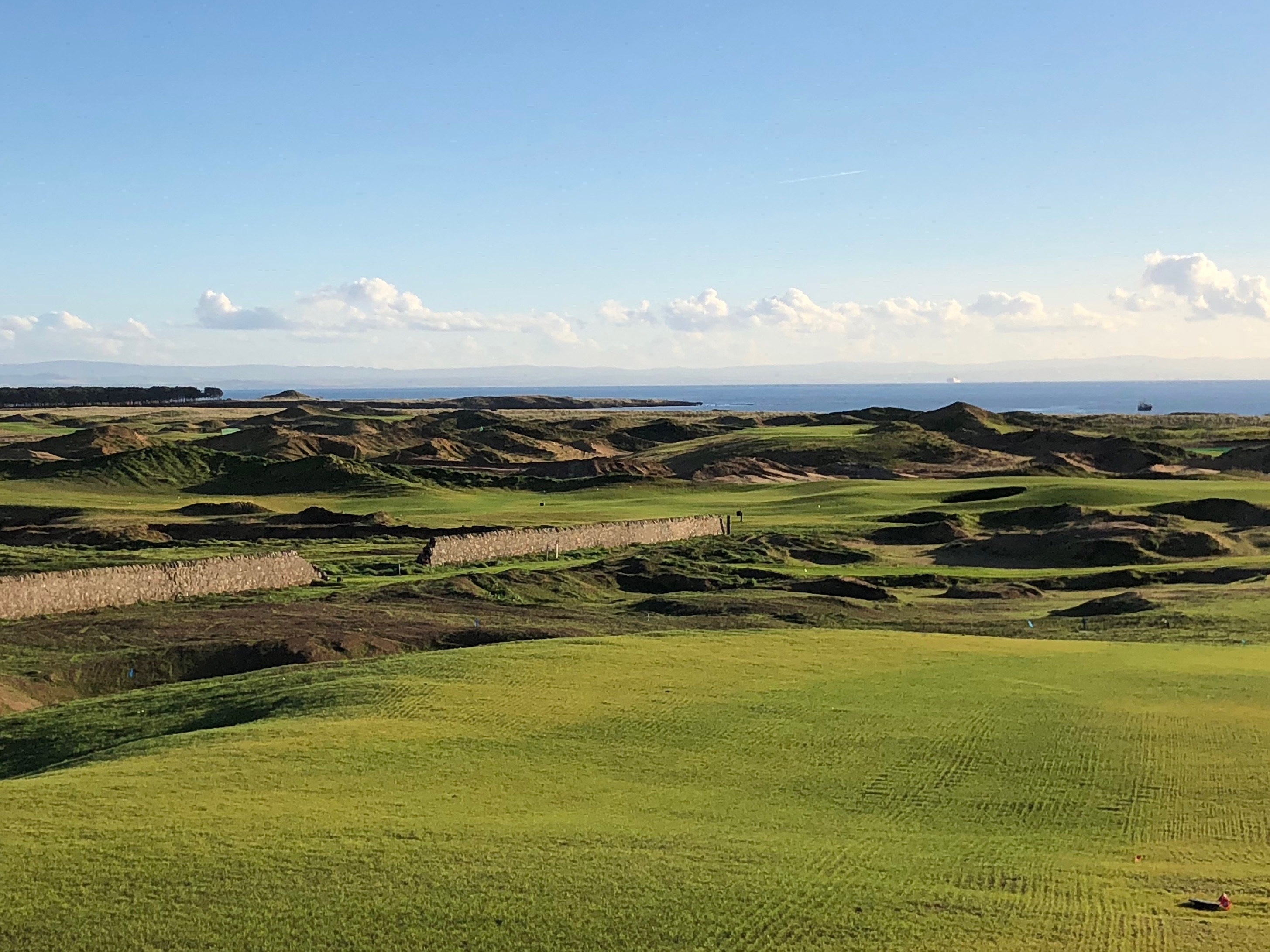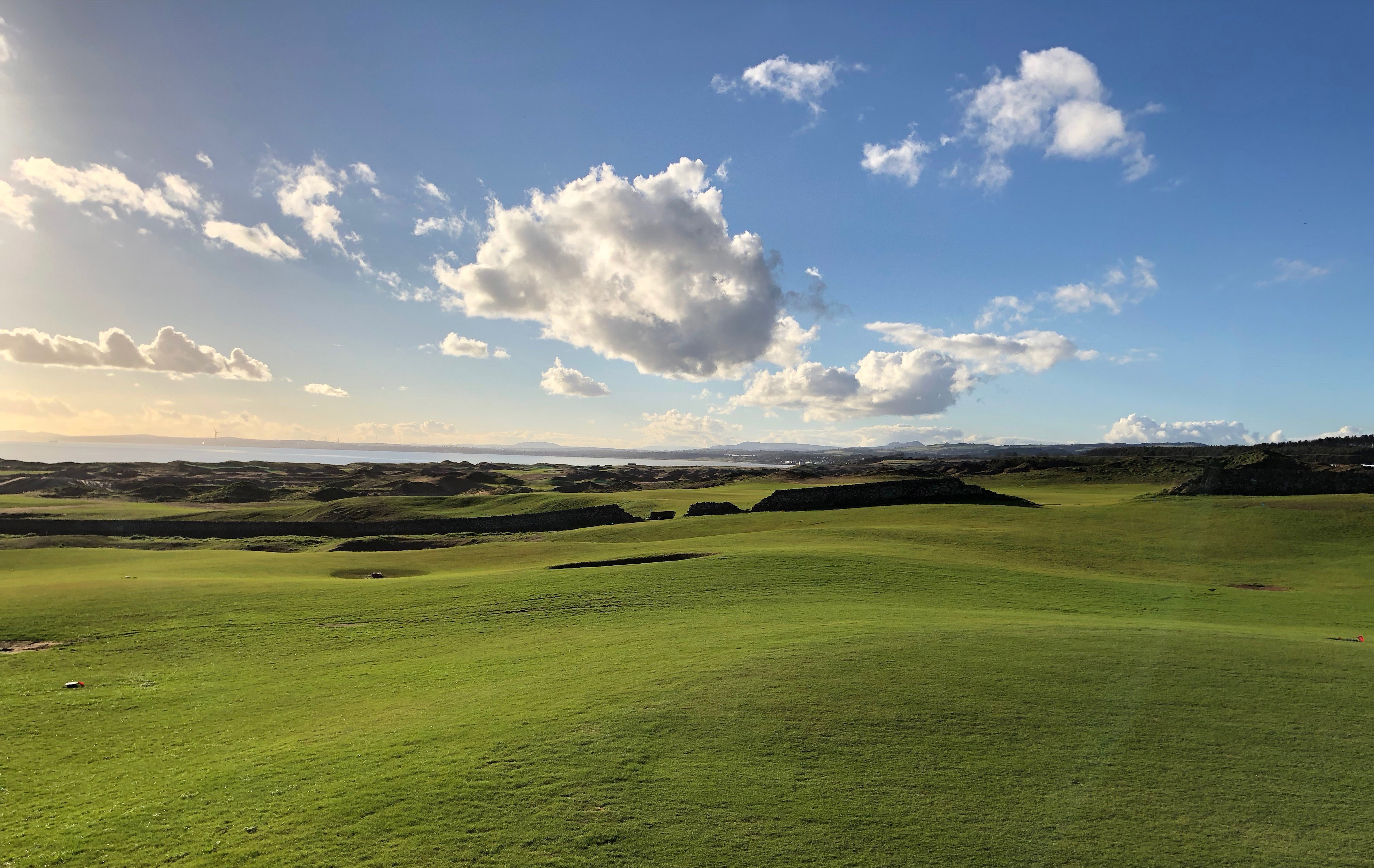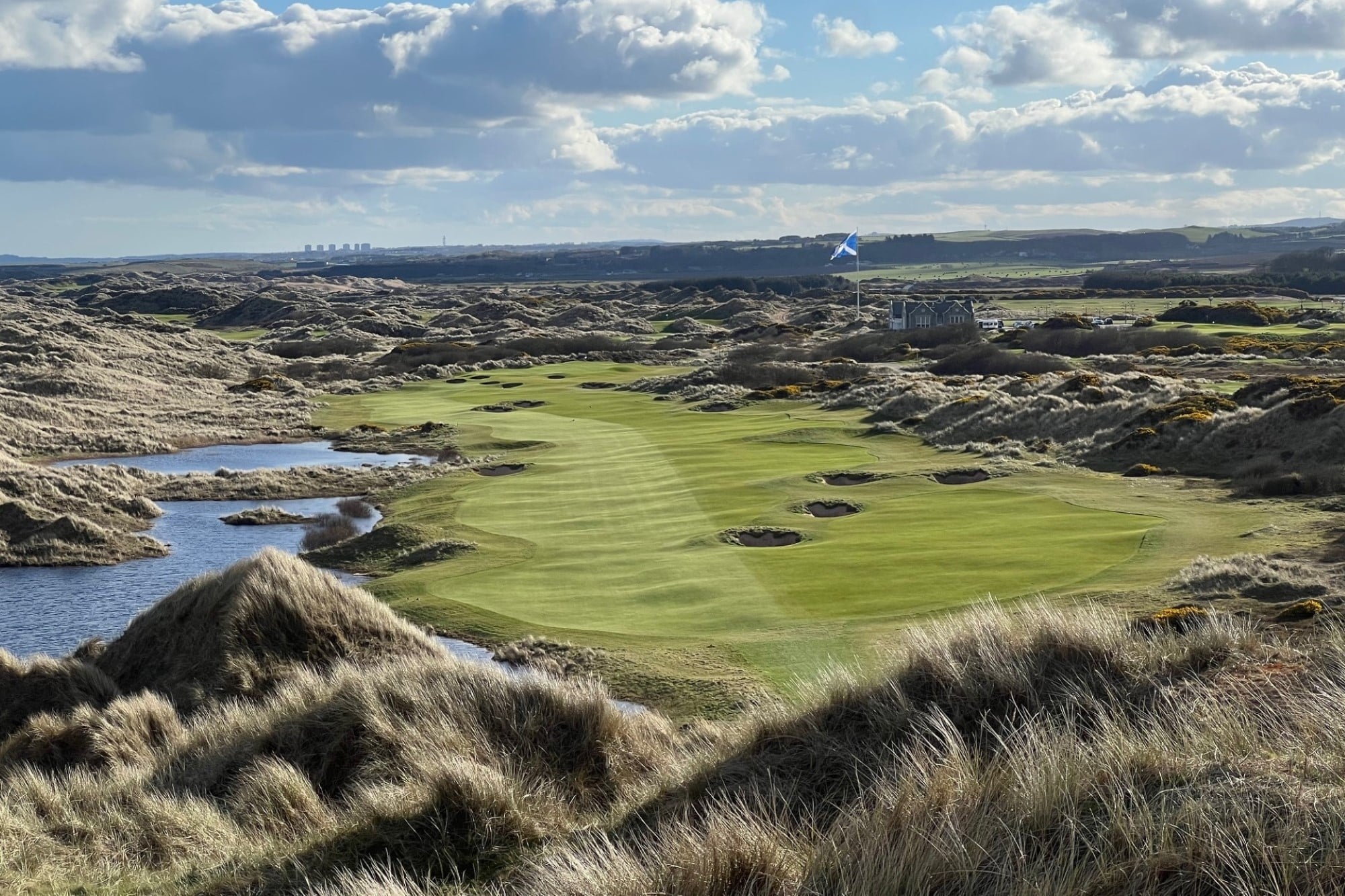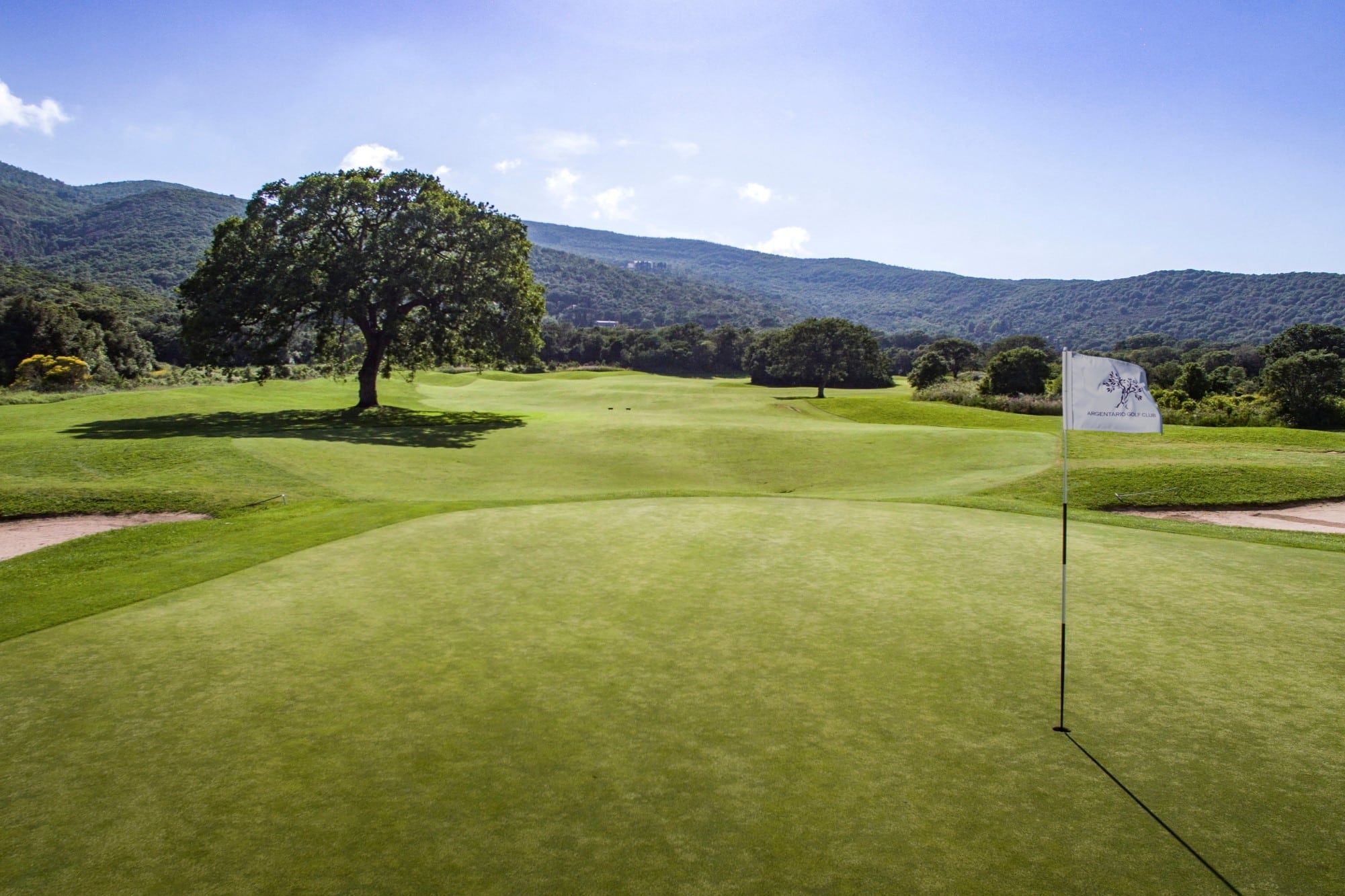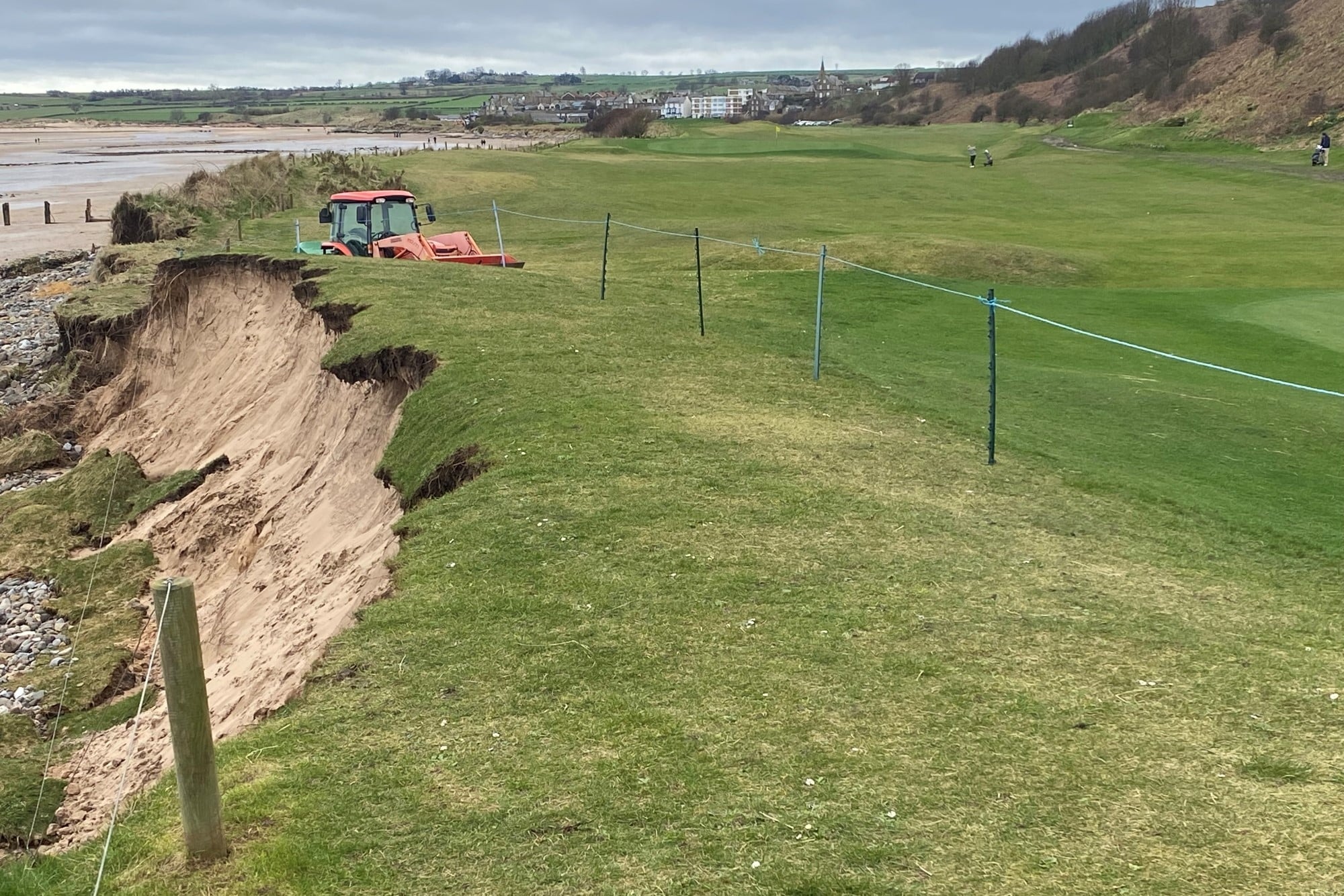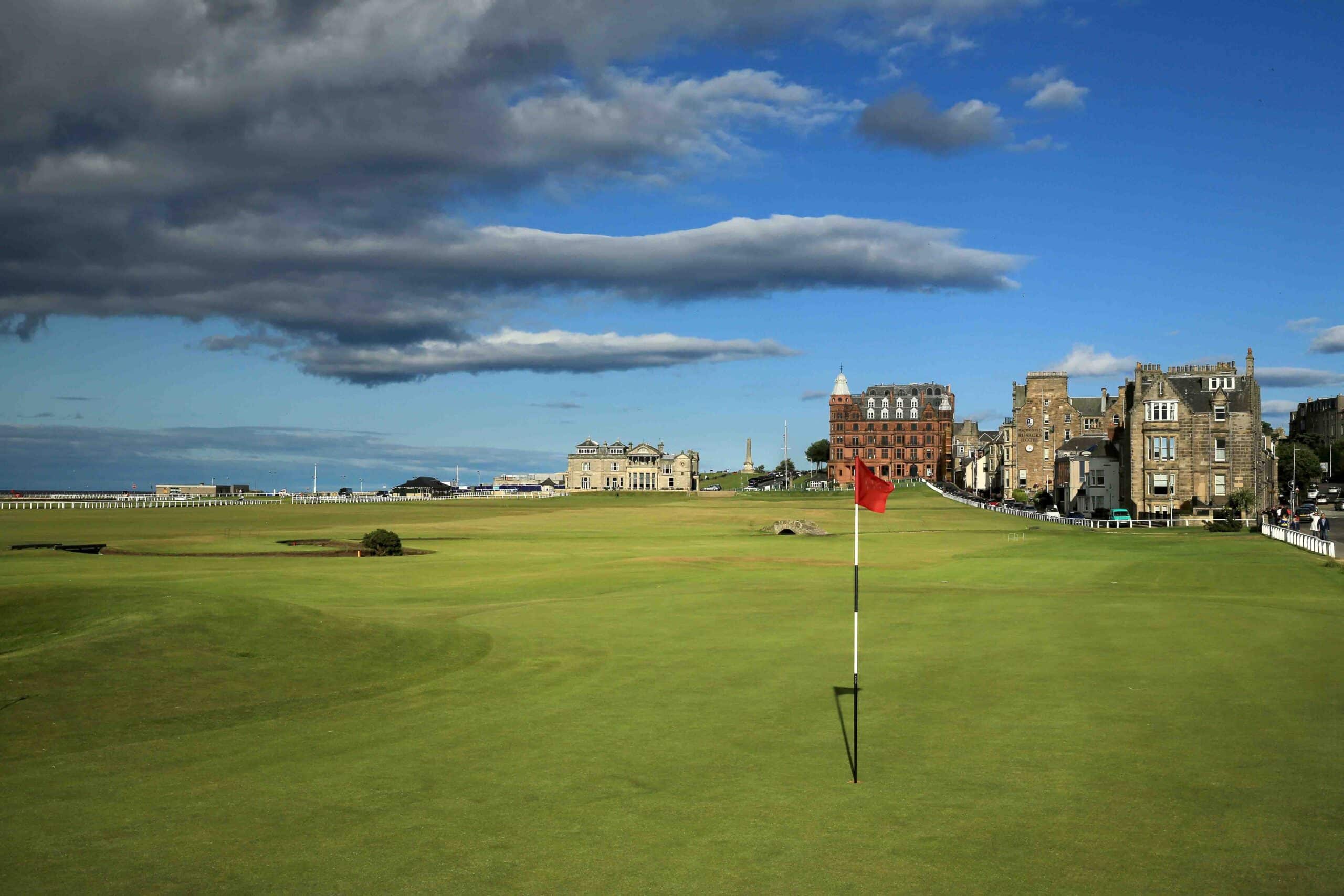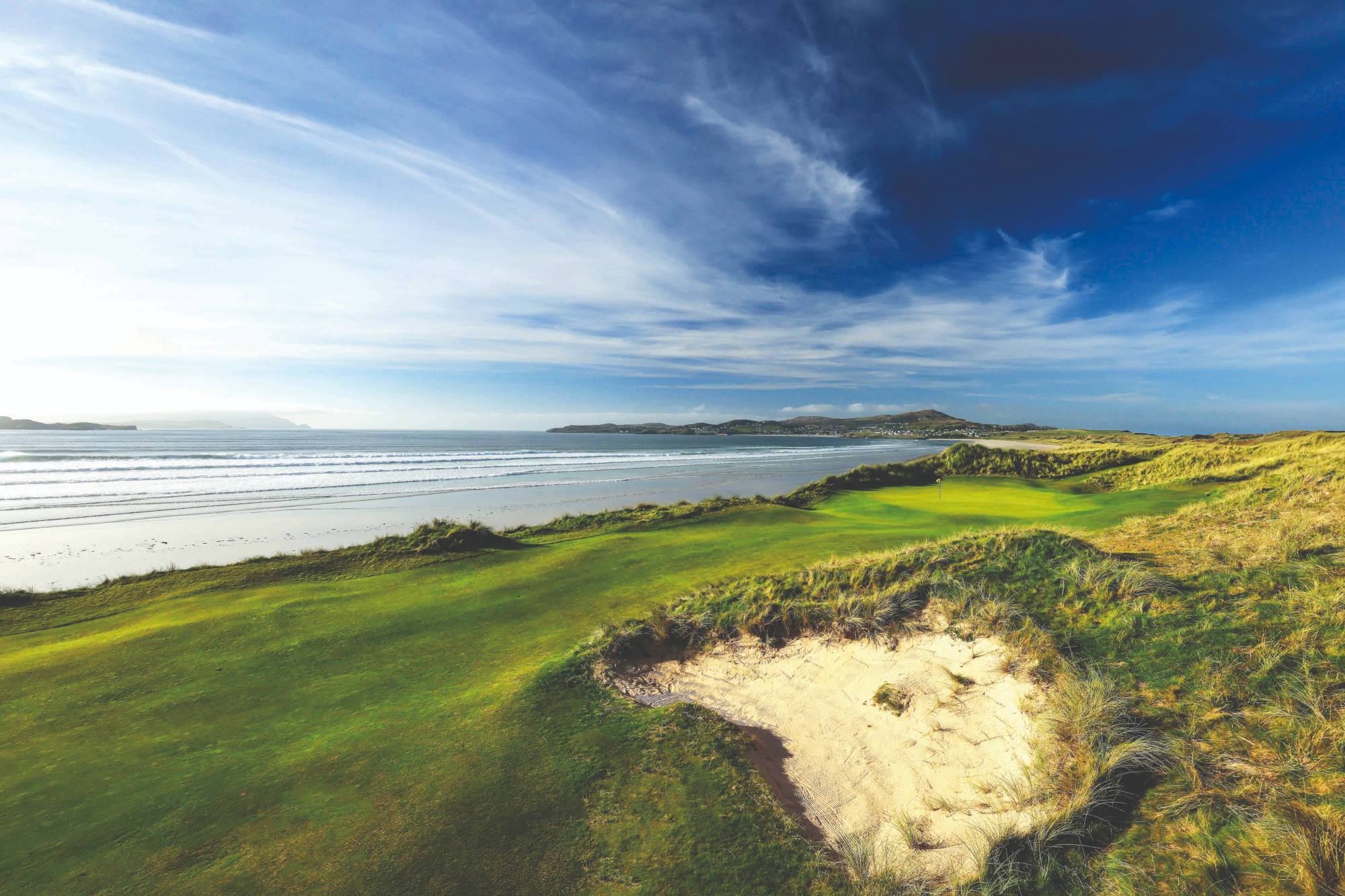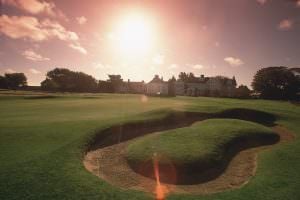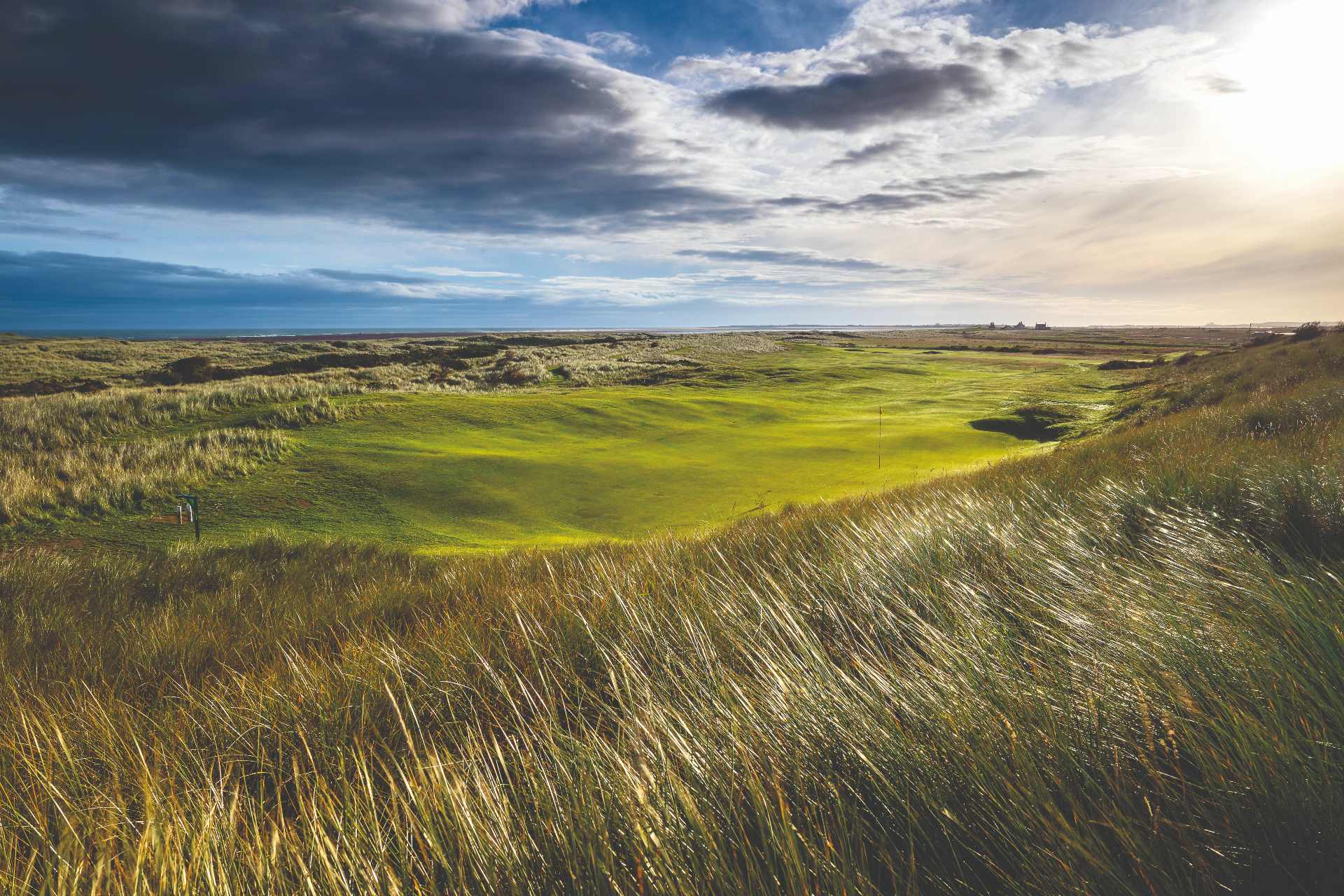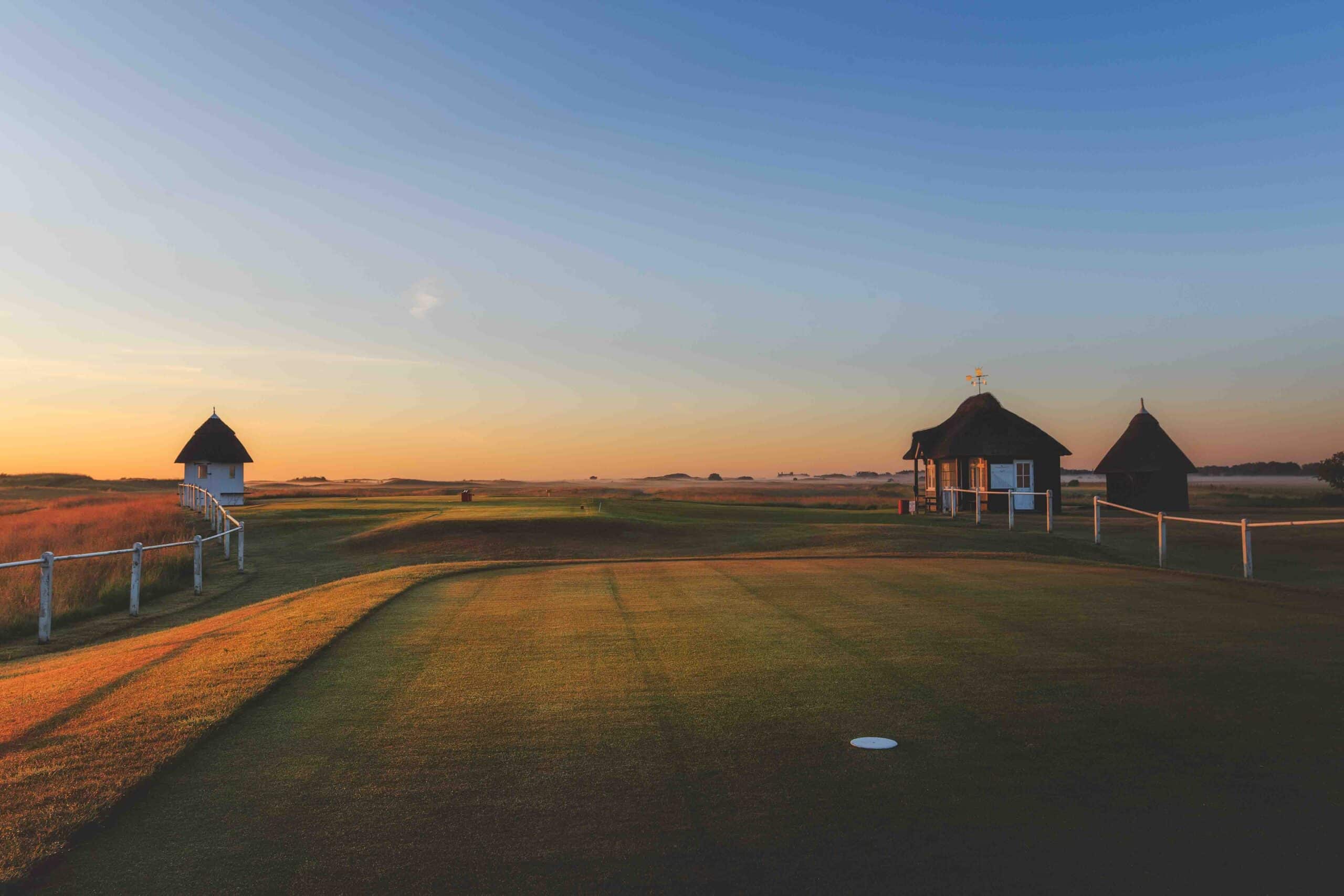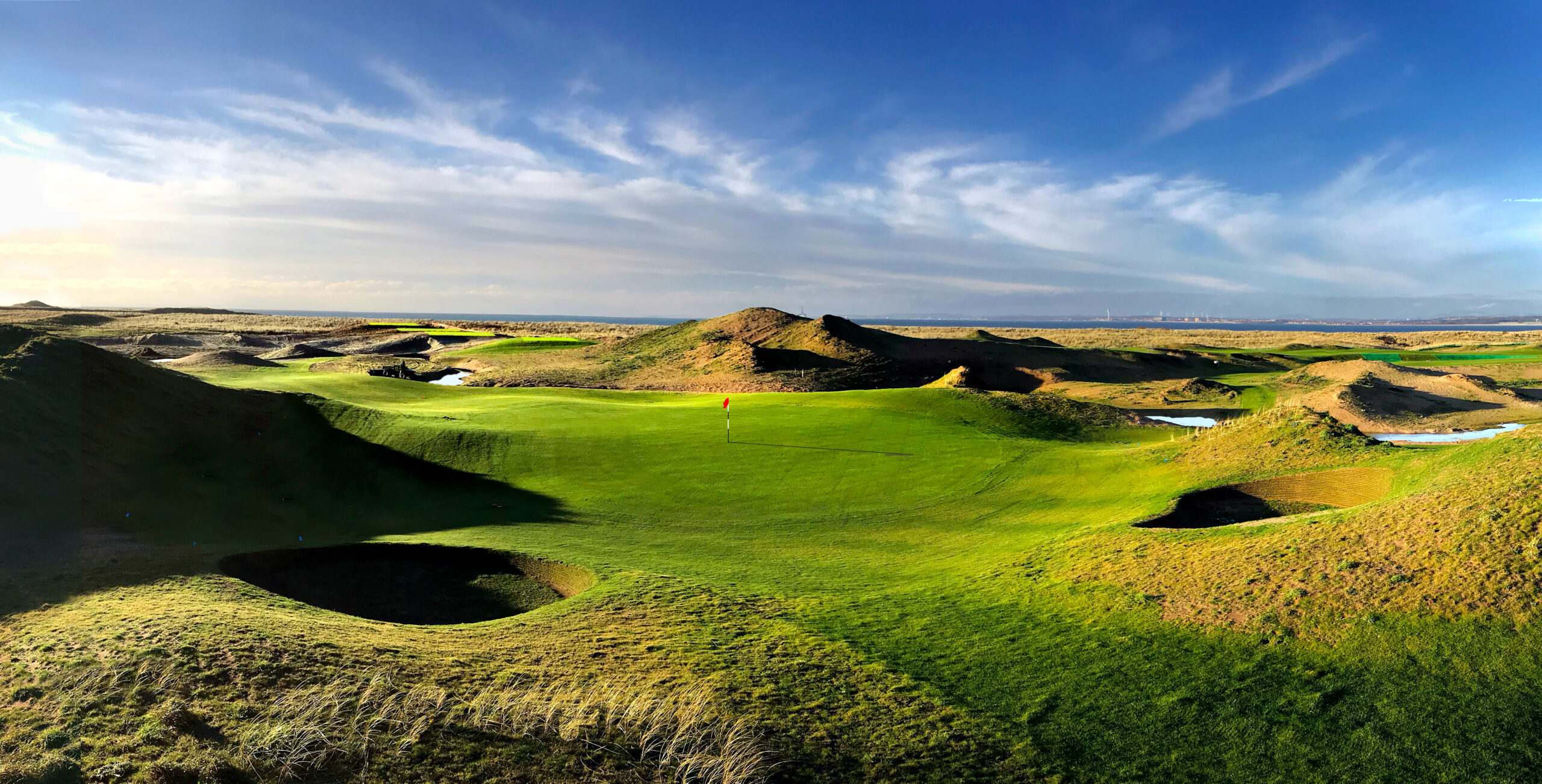
The inside story of Dumbarnie, Scotland’s new world-class links
While all the chat has been about Coul Links – and understandably so, given the combination of a promising seaside site, legendary developer Mike Keiser and feted architects Coore-Crenshaw – Scotland is going to get an indubitably exciting new links course way before the much-anticipated proposed one in Dornoch.
All 18 holes have been shaped on the Clive Clark-designed Dumbarnie Links in Fife and it is poised to open in mid-May 2020 – ahead of schedule after excellent summer weather.
Within 10 miles of St Andrews, it is located on the north shore of the Firth of Forth, directly across the water from Muirfield – with 14 holes having sea views.
Former Ryder Cup player Clark has designed over 30 courses in Europe and the United States, initially in partnership with Peter Alliss, and in this insightful essay he offers a window into what we can all expect from the latest addition to Scotland’s links portfolio…
Why Dumbarnie is unique
Each genuine links course is as individual as a fingerprint. In fact, there are only around 250 genuine links in the world; of these, only around 40 can be classified as ‘world class’ and are internationally known. For reference, there are approximately 34,000 golf courses in the world.
Dumbarnie Links is unique from the perspective that even the site has no direct correlation to any other well-known links.
The spectacular property is adjacent to a mile and a quarter of beach/water front. The site is on two separate levels which are connected by a gentle, sweeping escarpment.
This has proved to be an enormous advantage as we have 14 holes which have panoramic views of the Firth of Forth and across the water to Edinburgh, Muirfield and North Berwick.
Now that there is a course on the site, with around 600 dunes that look very natural, the whole experience and look has changed dramatically and for the better.
It is common for some of the traditional links courses to play parallel to the coastline, largely due to the strip of land that they are built on. Dumbarnie plays in many different directions on this vast 345-acre site.
Four of the holes play from the top of the escarpment to fairways some 50 feet below and aim directly south which gives magnificent water views as a backdrop.
It also has some tees and greens that are close to the water, with excellent views of Leven Bay and beyond.
A further feature of the course that is rarely found on links is that there are a number of risk-and-reward holes.
Four holes, for example, are dog-legs and have twin fairways, thus inviting the golfer to think before proceeding…
The golfer has to make their mind up whether he is going to take the longer route with the wide fairway, or cut around 40 yards off the hole and risk a substantially more treacherous line to the green.
Also, given a favourable wind and a spirit of adventure, there are three driveable par 4s. The 17th, for instance, where the prevailing wind follows, is a good example.
There is a generous fairway to the left which will leave a short iron to the green. The ‘tiger’ line, however, offers the golfer a tempting opportunity of reaching the par 4 in one stroke, and plays over a 200-year old Scottish stone wall to a landing area that is guarded by eight somewhat precocious pot bunkers.
‘You pay your money and you take your choice’!
‘A very natural links’
All 18 holes are very ‘linksy’ in nature. There are around 600 sand dunes which will feature ‘blow outs’ as well as tall, thin fescue grasses creating a very natural look that is typically links golf.
There are two styles of bunkers throughout the course. We have large, natural-looking bunkers that exist off the edge of the fairways.
Our other style of bunker is the traditional pot, revetted style of bunker which is common to all golf courses on The Open rota. In this instance, we have used artificial sod to stack the faces.
Unless one were to study these closely, it is unlikely to be recognised that these are not made from layers of natural sod. Although these are a little more expensive to build, they save dramatically on maintenance in the long run.
A regular pot bunker (with real sod) will last approximately two to six years and can be badly affected by aspect, clubs and balls hitting the face, and general weather conditions. Our artificial sod bunkers are guaranteed for 20 years and will probably last longer.
Therefore, before a re-build is required, they are likely to last around four times longer than natural sod.
The clubhouse, incidentally, has magnificent panoramic views too and is perched 90ft above sea level. It looks out across the course and enjoys extended views over the Firth of Forth and beyond to the East Lothians.
Giving nature a helping hand
Dumbarnie is a fabulous site with an impressive backdrop. However, the majority of the land on the two levels was naturally relatively flat, even though it is genuine sandy links land.
Now that there is a course on the site, with around 600 dunes that look very natural, the whole experience and look has changed dramatically and for the better.
To create these features, a large number of earth moving machines were employed. These comprised massive excavators and 50-tonne dumper trucks. Moving two or three holes behind these works come the shapers – we had three shapers driving D6s which is a medium-sized bulldozer with blade.
Other aspects include the irrigation system, drainage, bunker construction, root zone for the greens, finishing, seeding, and the many other aspects that are involved in the construction of a course.
In general terms, pretty much all of the holes required extensive earth moving, but the result looks very natural. Some of the holes resemble the sand dunes of Royal Birkdale and Royal St George’s. Others have more a flavour of Muirfield, while still others gather from the strategy found at Royal Troon and the Old Course.
‘It will raise the spirit, not intimidate’
Although it presents some challenges, Dumbarnie Links is a forgiving course. The fairways and playable areas are relatively wide. On average, our fairways are about 45 yards across with generous amounts of semi-rough on either side.
I prepared an analysis of the courses on The Open rota. The average width in the landing areas was 28 yards!
So, Dumbarnie will not intimidate, but instead will raise the spirit of the average golfer.
Typical of links golf, Dumbarnie offers the opportunity to roll the ball onto the green. With firm links-type approaches, it means the golfer can pitch short of the green and roll on.
There are, however, certain pin placements where the pin can be hidden behind bunkers, but it will still offer the golfer an opportunity to play to the centre of the green. A hidden pin offers ‘risk and reward’.
Further, the greens are of a generous size and generally the putting surfaces are reasonably benign, but will have subtle breaks and nuances.
Four holes have greens with three plateaus, but they are gently undulating and not severe. Extreme greens, particularly on a links course where wind is often evident, are not the player’s friend.
However, the course will present a challenge of interest to every category of golfer. Much depends upon the chosen tees. Our course has five sets of tees on every hole which represent a vast difference in the total length of the course.
If the tees are placed on the front of the most forward tee boxes, the course will measure around 5,100 yards.
If one were to play from the black tees (which would represent club low handicap tees) the yardage would be 6,900 yards.
However, we have a dozen professional tees which measure 7,600 yards and would be suitable for Tour players (or club golfers who think they can play better than they can!).
It is to some degree generous and will negate the round from turning into a golf-ball-searching safari. Given that the greens do not represent ‘elephant burial grounds’, the course has been designed for all levels of golfer to have an inspired and highly enjoyable experience.
As my old friend, Peter Alliss, once said, “I’ve never had any golfer come up to me and say, ‘I had a wonderful day on the course – I lost seven golf balls and only three-putted six greens’.”
Now taking tee times
Dumbarnie is now taking tee times. Visit the club’s website for more information.
We are proud to announce we are ready to start taking tee times! Play will begin May 16th, 2020. To be one of the first to book your tee time, visit https://t.co/knepdE6u5c!
Read more here: https://t.co/GZ6kEvKcM2 pic.twitter.com/6JRhu5bLwM
— Dumbarnie Golf Links (@dumbarniegolf) May 13, 2019

‘What’s my career missing? I want to design a links from scratch’

How Glasgow Golf Club rose from the ashes

‘I was two hours late – they must have been desperate!’
Chris Bertram
Chris Bertram is a specialist in all things golf courses.
He was born and brought up in Dumfriesshire and has been a sports journalist since 1996, initially as a junior writer with National Club Golfer magazine.
Chris then spent four years writing about football and rugby union for the Press Association but returned to be Editor and then Publisher of NCG.
He has been freelance since 2010 and spends the majority of his time playing golf and writing about the world’s finest golf courses.

